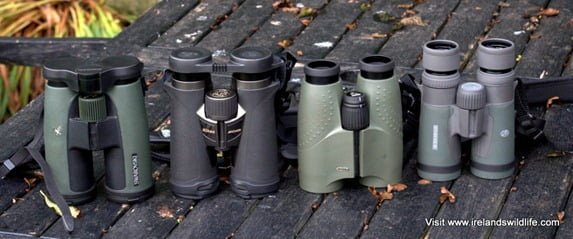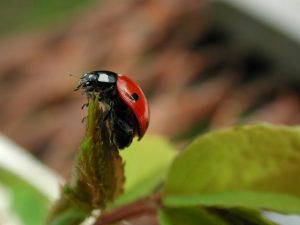Choosing the right optics can enhance your wildlife watching exponentially… but it can also be a tricky thing to get right. Here Jason Whitehead, who runs the excellent Best Binocular Reviews website gives us his top tips for picking the perfect binocular for wildlife and travel [IW]
I travel quite a bit mostly because where I currently live in rural France is on a different continent to where my roots are in Southern Africa. I go back to this region at least once a year (sometimes more), not only to visit friends and family, but also to pursue my passion for wildlife photography, particularly that of photographing Southern African birds.
Before moving to Europe, where I now run my Best Binocular Reviews website, I used to work as a safari guide, so binoculars have always been an invaluable tool for my job and my hobby.
I am fortunate in that I now get to experiment with a huge variety of makes, sizes and types of binocular, and the ones I choose to take with me on a trip back “home” has evolved over the years. Here are a few things that I have learnt along the way, which I hope will help you:
Size
When traveling, there are quite a few reasons you would want to keep the size and weight of everything you take, including your binoculars, to a minimum. The obvious and most important one being that a small binocular is just simpler to carry and easier to pack away within your luggage.
However there are a few downsides to reducing the size of your optics:
- Smaller binoculars have smaller objective lenses, which capture less light and so with all else being equal, they will not be able to transmit as much light to your eyes. For a good quality compact this is not a big issue in good light, but when the light conditions are poor compacts can struggle.
- Smaller binoculars also often have less eye-relief which may cause you problems, especially if you plan to wear glasses whilst using them.
A lot of the wildlife that I encounter try to keep out of the midday sun to stay cool and are most active early in the morning and then again late in the afternoon. Making this the best times to look for them. Birds are also most active at these times, but this is also when the light can be far from ideal and so this is why ideally you want a binocular that will perform well in low light.
So unless you really want to travel as light as possible, or if for example you use a camera as well as your binoculars, making size and weight very critical, I would usually opt for mid-sized binoculars which have objectives lenses of around 32mm in diameter. These may not quite match the performance of a full sized version (42mm bins), but they will easily outgun true compacts (under 28mm) in low light situations and thus for me make a good compromise between the two extremes.
Higher quality mid-sized binoculars are also good enough to have as your all-round “general use” binocular meaning that once you get back from your travels they will still be very useful to you for many years to come.
If the extra space in your hand luggage is not that important to you, or image quality and low light performance is very important, then you should of course opt for a larger binocular with objectives of around 42mm.
Power
Whilst it is tempting to get a really powerful binocular to see as much detail as possible, high magnification bins do have some major drawbacks:
You get a much narrower view through them, which means that you see less of the whole picture and in the case of smaller or fast moving wildlife… like birds, it can make locating and following them much more difficult.
It can also be quite hard to hold the image steady when using very powerful binoculars, this is especially the case with smaller compacts.
So I tend to choose a magnification between 8 and 10x for most wildlife observation. If I know that my focus will be birding at closer ranges in forested areas, then I would go for an 8x binocular with as wide a field of view (FOV) as possible. If on the other hand, I am mostly going to be looking at larger animals, over longer distances, the magnification becomes more important than the FOV and so I usually opt for a 10x binocular.
Other Features to Look out for:
When you start researching binoculars, you will soon discover that you get bombarded with a whole host of features and specifications, below are a few important ones that I recommend looking out for:
Water & Fog-proof
Get a binocular that is fully waterproof and has had the internal air replaced with a dry gas (usually nitrogen or argon) which protects the internal optics from fogging up.
I recommend this, even if you don’t plan on hiking through a tropical rainforest, or going out on safari in a thunderstorm, because it will also prevent dust from entering the system in dry areas and it is a good indicator of the overall quality of the device.
Anti-Reflection Coatings
Most binoculars will advertise that they have either coated, fully coated, multi-layer coated or fully multi-coated optics. Try and make sure you only go for ones that are fully multi-coated, which means that all the glass surfaces have had multiple layers of anti-reflection coatings applied to them.
These coatings make a big difference to the amount of light that gets transmitted through the device and onto your eyes.
To save money, some binoculars will have less coatings on only a selection of the glass surfaces, but with the result that they produce a lower quality image that is far less bright in poor light conditions. This is especially important when choosing mid or compact binoculars where the amount of light entering the system is already below that of larger bins.
Phase Correction Coatings
Better quality roof prism binoculars will use phase correction coatings on their prisms. As the name suggest these coatings help keep the wavelengths of light in the correct colour phases, producing an image that has a higher resolution, improved contrast and reproduces colours more faithfully.
Note: These coatings are only necessary on the roof prism design and are not needed on porro prism binoculars. This is one of the reasons why at the cheaper end of the market, porro prisms often perform better than roof prisms that will not have these coatings to save money.
Price
My advice is always only to spend as much as you can afford to lose! I say this because when travelling where the risk of misplacing, breaking or having your pair stolen is much higher than if they were to be kept around the house.
But if it is at all possible, please try and stay clear of very cheap pairs of binoculars, especially if you are after a slightly higher powered device.
Mid and high end binoculars are superior in many ways as they are made better using much higher quality glass and coatings that produce a far superior image and if kept carefully will last you a lifetime.
If however, you are on a really tight budget, then you are probably better off choosing a porro prism design as they are less complicated to make and require less specialised coatings than roof prism designs. So at the bottom end of the market they tend to outperform roof prism bins with the same price tag.
I hope that some of this advice helps and that you enjoy watching some fantastic wildlife events through your binoculars no matter where your travels take you.









